[Tomorrow the auction for Mystery Object with story by Ben Greenman will conclude. When it’s over, we’ll reveal the object (first to the winning bidder, then to everybody else). Meanwhile, here is my case (borrowed from Murketing.com) for this as arguably the most significant Significant Object to date.]
The Significant Objects project has conclusively demonstrated that narrative adds measurable value to objects.
What does this imply about the objects themselves, and whoever created and produced them? Something I hear often from assorted gurus on design, marketing, and the like, is that consumers value the story of an object in the sense of knowing how that object was made, or designed. Did a recognized Design Genius dream it up? Is there footage of the whiteboard meetings where the genius insight was arrived at? Or: Was the object crafted by hand? Perhaps knowing more about the crafter’s skill-acquisition history, or personal ideology, adds valuable narrative.
Yet the Significant Objects project added measurable value even while explicitly ignoring such matters. Every Significant Object carries two narratives, but neither has anything to do with the kinds of stories just suggested. Instead there is the narrative invented by the writer who has agreed to create a story about whatever doodad is for sale; and, in addition, there is the story of the project itself. Probably both of these narratives add value to some extent, with specifics varying from buyer to buyer. But while most of the objects sold over the course of the project have been mass-produced, the intent of whoever designed them, whoever marketed them, and why, and how, is flagrantly disregarded, replaced with pure fiction. Arguably, Significant Objects obliterates designer/producer intent.
Still, whatever the fate of that intent, its results remain in the form of thing itself. Clearly some item sold by Significant Objects have been more intrinsically appealing than others, and it must be conceded that however much our writers’ stories increased the value of an object in the open market, the aesthetics of the object must figure in somehow.
Which brings me to a recent Significant Object: the Mystery Object, with story by Ben Greenman. In this instance, not only is the designer’s intent ignored, not only is the material backstory disregarded, the object itself is not present.
What we have is Ben Greenman’s narrative about the object, and perhaps the narrative of Significant Objects as a project — to which the addition of a non-present object of course adds yet another pleasing plot twist. By eliminating the object itself from the equation until after the bidding has concluded, this auction sells invented Significance in its purest, most uncut form yet.
In a sense, this makes the Mystery Object unique even among the project’s already-singular series of offerings; as a result, it may be the most valuable object yet, not despite its absence from the scene until the moment that value is determined, but because of that absence. Who wouldn‘t want to own such a thing — whatever it is?
Bidding stands at $28.50 $59.00.

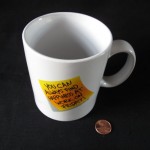
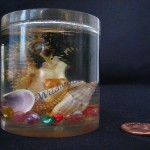

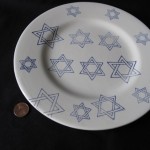
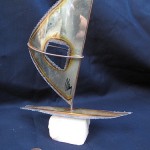
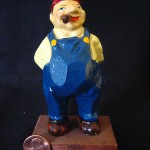
It’s only a matter of time until some young upstarts create a website dedicated to fiction about Mystery Objects and sell ’em on eBay…
OK, the Mystery Item sold — for a whopping $103.50. So… what was it?
I think that the significance of the Significant Objects project can be factored into the success of this auction.